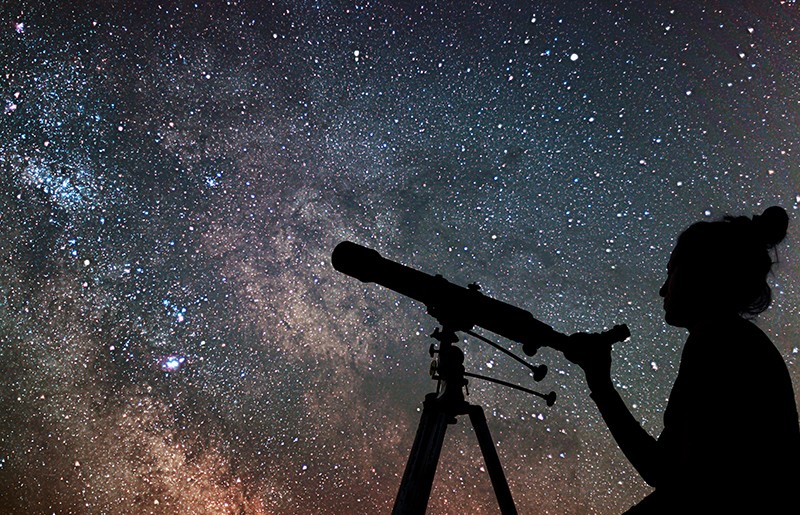See full list on skyandtelescope.org.
- Old Farmer's Almanac Moon, Sun, & Planets: Rise and Set, Full Moon, Moon Phases, Eclipse Dates.
- Astronomy The Milky Way’s central black hole may have turned nearby red giant stars blue A powerful blast from the supermassive black hole at the Milky Way’s center may explain the lack of.
- Earth-like extrasolar planet found; double helix nebula; supermassive black holes, astronomy articles, astronomy pictures.
Did the astronomy bug bite you while you were out last night? Feeling inspired to learn about the wonders of the sky, the solar system, and all the science behind them? Let this page serve as your guide to astronomy for beginners.
Check out what's up in the night sky this week. Get advice for buying your first telescope. And find the best coverage you’ll find online of upcoming celestial events such as eclipses and meteor showers.
What's Up In the Night Sky Tonight?
The best guide to astronomy for beginners is the night sky. All you really need to do to get started is look up — preferably at night! You'll find an amazing treasure chest of astronomical wonders, even if you don't have a telescope.
Our most popular (and free) offering, 'This Week's Sky at a Glance,' guides you to the naked-eye sky, highlighting the major constellations and planets viewable in the evening sky, with occasional dips into deep-sky territory.
If you'd rather listen while under the stars, download our monthly astronomy podcast and take it with you when you venture out tonight for a guided tour to the night sky.

Or do your own sleuthing with our interactive sky chart.
Astronomy.com
If there are any major celestial events, such as comets, eclipses, or meteor showers, you'll find all the latest information (including instructions on where to look and detailed sky charts) in our observing news section.

Astronomy Facts - Building Your Background

Even though you don't need to know the Greek names of the constellations or understand the nature of black holes in order to relish the night sky, you might want to anyway. We provide a rich supply of information and resources on astronomy for beginners.
- Download our free guide to beginning stargazing - great for clubs to hand out to members, too!
- Learn to use sky charts and star wheels (or make your own)
You'll also find a growing supply of answers to frequently-asked astronomy questions, be they related to the hobby or science of astronomy.
Ready to Go Deeper?
The naked-eye sky is full of astronomical treasures, and it gets even better with a little magnification. But don't feel you have to go out and buy a high-power telescope right away. Often the best first telescope is a pair of binoculars. Binoculars can give you the wide-field view that's essential to really learning your way around the night sky. Find out more about choosing and using binoculars here.
Once you're ready for a telescope, we have more than a few words of advice! You'll want to check out two digestible articles on the topic of choosing your first telescope: 'What to Know Before Buying a Telescope' and 'How to Choose a Telescope.' You might also be interested in our video guides to choosing, using, and equipping your telescope.
Once you're ready to take on deep-sky challenges, such as spotting faint galaxies and fuzzy nebulae, prepare for a dive into deep celestial seas with Sky & Telescope's Deep-Sky Observing Collection.

Astronomy Clubs Near Me
And if you're looking to get started in astrophotography, be sure to check out our free Astrophotography Primer. Enter your email to download the ebook for free, plus receive our weekly e-newsletter with the latest astronomy news.
Get Involved in Astronomy Communities
Astronomy can be an enlightening solitary activity, but it can also be fun to have company — and advice from seasoned experts. Discover astronomy clubs and other organizations near you or find local astronomy-related events in our events calendar. (Or if you're already involved, submit your own club or event.)
Also, keep up with the Sky & Telescope community online at Facebook, Twitter, or Instagram.
What's in your night sky tonight? Open our interactive sky chart to create a custom map the night sky for your location at any date and time!
What Is the Interactive Sky Chart?
Powered by Heavens Above, our interactive viewer charts the night sky as seen by eye. The map includes the Moon, stars brighter than magnitude 5, the five bright planets (Mercury, Venus, Mars, Jupiter, and Saturn), and deep-sky objects that can be seen without the use of optical aid.
How Do I Use the Interactive Sky Chart to Explore the Night Sky?
Chart the stars and planets visible to the unaided eye from any location, at any time of day or night, on any date between the years 1600 to 2400. Simply enter your location, either via zip code, city, or latitude/longitude, and find out what's up in your sky tonight! Change the horizon view by dragging the green square on the full-sky chart.
Astronomy Picture Of The Day

Customize your map to show (or not show) constellation lines, names, and boundaries, deep-sky objects, star and planet names, and more. We also now offer the option to turn off the Sun, in order to show which stars are up during the daytime. The chart is mobile-friendly, so take it with you when you head outside. There's also an option to print a black-on-white version of the all-sky chart — just use the printer icon at top right.
And don't forget to experiment! Discover the difference between equinox and solstice, and find out if the constellations really are upside down on the other side of the equator.
If you have questions about how to use this sky chart, please email us at help@skyandtelescope.org.
Want to Learn More?
Astronomy News
Like what you see here? You'll get an even bigger, accurately mapped sky chart, along with oodles of stargazing information, in the pages of Sky & Telescope magazine.
